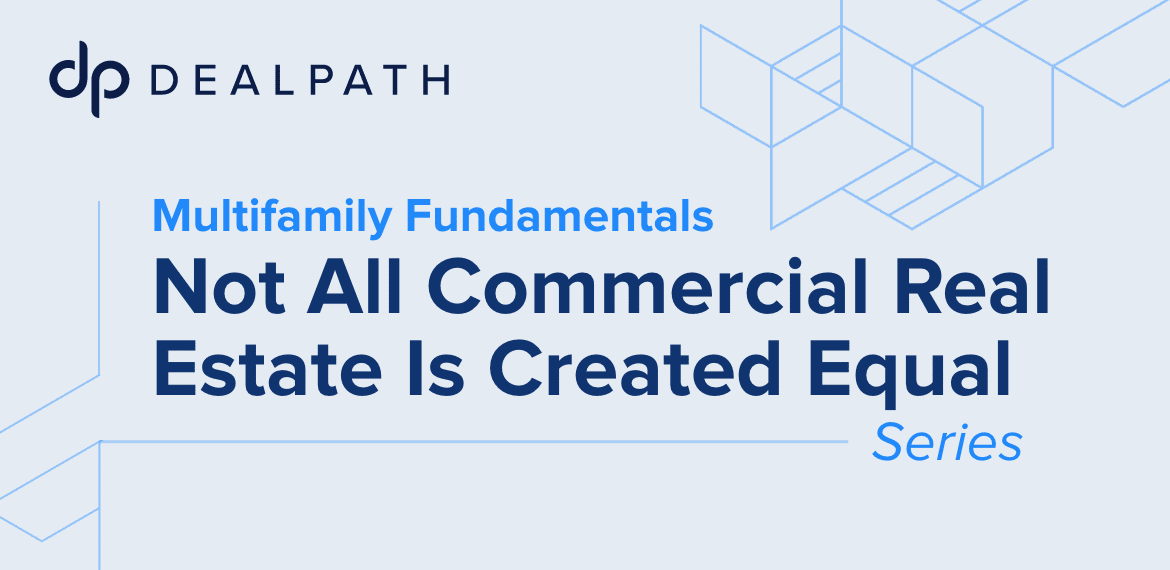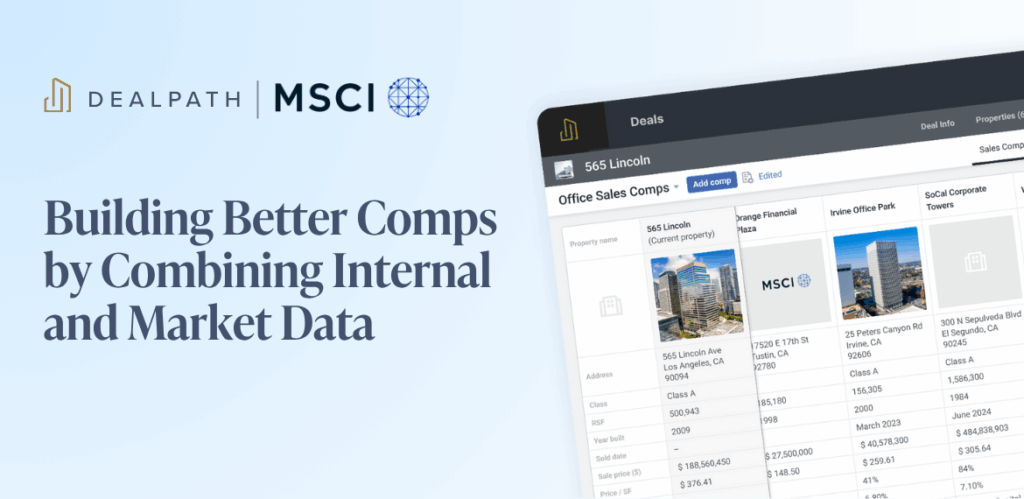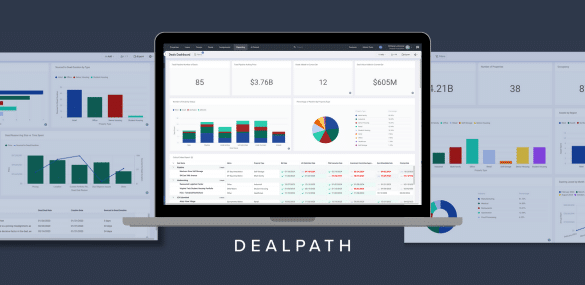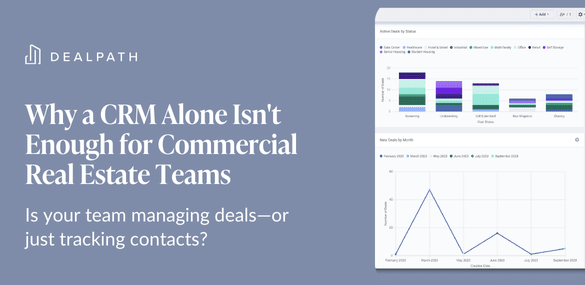Not all commercial real estate is created equal: This is the first blog post in a series about fundamentals across major CRE property type sectors.
The old adage rings true as much today as it did during the 2007/2008 Great Financial Crisis: real estate is a cyclical market. Despite short-term tailwinds, strong real estate fundamentals will ultimately prevail, but blanket statements rarely capture the full truth. Not all commercial real estate is created equal; various property types and market segments move in different economic cadences and supply/demand market cycles.
One of the primary reasons that commercial real estate, as an asset class, has endured and thrived throughout volatile market cycles is its diversity of property types, or sectors. Commercial real estate is a dynamic, diverse and heterogeneous asset class. In the US alone, there are 7 property type sectors that eclipse $2T in value, including office, retail, industrial, multifamily, hospitality, land, and specialty buildings.
While technically and practically part of the same asset class, performance in one property type sector is not necessarily correlated to others. Macro factors might influence various sectors in different ways. For example, job growth or remote worker dispersion in up-and-coming metros like Phoenix might strengthen opportunities for multifamily investors, while potentially reducing office demand in central business districts like San Francisco.
In the first blog post of this series, we will deep dive into fundamentals shaping the multifamily property type’s performance today, as of Q4 2023.
Leverage Supports Strong Real Estate Fundamentals
Before covering macroeconomic trends shaping the multifamily market, it’s important to understand the role of leverage in shaping return profiles and real estate fundamentals across all property types.
CRE is often a leveraged asset. When managed wisely, leverage can be a powerful and useful tool. While investment managers might have sufficient cash on hand to purchase a property outright, adding leverage (or debt) can boost the internal rate of return (IRR) of a real estate acquisition deal, which also enables that same investor to diversify equity capital across more investments or properties.
However, even the most lucrative or attractive properties can be negatively affected by too much leverage, changing interest rates or a lack of refinancing sources. Ultimately, debt payments must be made on contactually scheduled dates, regardless of market conditions, asset performance or financing rates and availability. Thus, equity investors that fail to generate the cash flow required to make contractual debt payments might be forced to find additional equity capital, refinance at unattractive rates and terms, or potentially even lose the asset to the lender.
With interest rates at their highest level in 10+ years and debt capital more difficult to source, investors need to prudently manage their equity interests and debt levels. They also might need to plan to secure additional equity capital to preserve and protect their ownership interests in an asset.
How Housing Shortages & Demand Affect Multifamily Real Estate Fundamentals in 2024
Population growth, immigration, migration, changes in household formation and other factors have caused a material imbalance in demand for housing and housing stock across US markets. This housing stock gap has grown materially in the past 12-15 years due to a slowdown in housing unit construction following the Great Financial Crisis (GFC). According to Zillow, US housing stock is undersupplied by 2-4 million units as of mid-year 2023. The shortage developed in the years following the GFC, and was sharply yet briefly amplified by supply chains, rising costs and other factors at the pandemic’s outset. Even if demand slows, generating excess supply to chip away at the existing shortfall and rebalance the market will take significant time (years) and consistent effort.
For the 10+ years prior to the GFC in 2007, the U.S. saw total housing starts of 1.6 – 2.1 million annually, which includes single family residential (SFR) and multifamily units. Given actual demand at the time, these levels are now viewed as contributors to a supply excess that culminated in the GFC. For over ten years following the GFC, total housing starts were at approximately half these levels, resulting in today’s accumulated shortfall.
While SFR properties are distinct from multifamily assets, these two sectors are intricately linked. Prospective tenants often choose one or the other based on factors like market conditions, lifestyle, location, affordability and family formation status. In this sense, SFR and multifamily act as buffers for one another. It’s important to note that SFR generally accounts for 2-3x the number of new multifamily unit starts, meaning that SFR typically has a stronger impact on multifamily than multifamily would on SFR. For example, in 2021 and 2022, there was a double-digit percentage increase in the rental rates for multifamily as the supply shortfall particularly in SFR continued to expand.
The disparity between multifamily and SFR units varies significantly by region and sub-market, and while we won’t deep dive into specific geographic markets, we will address the broader factors distinguishing multifamily. In fact, even as the supply shortfall remains with the possibility for moderate SFR growth, the multifamily space in many markets will see significant or excess new supply hitting the market over the next 12-24 months, which many expect will keep rental rate increases at low, flat or compressed levels.
Multifamily Long-term Fundamentals Remain Strong
Precise estimates are difficult to validate, but experts anticipate approximately 500k to 750k annualized new multifamily units will be delivered between now and the end of Q2 2025. These units are in various phases of the development pipeline today, but will all be new and available for occupancy during the next 6-8 quarters; in fact, net delivery has increased by 20% as of Q1 2024. In some markets, this means new supply bursts of 5-10% of total inventory will increase pressure on rental rates as the market absorbs the new supply. Regardless, we are excited about the long-term fundamentals of the multifamily sector.
With rent growth slowing, construction financing costs increasing and general economic uncertainty persisting, the new development pipeline for multifamily has largely also hit pause. In fact, we anticipate seeing a significant slowdown in new starts hitting the market in 2-3 years (and maybe 3-4 years) from today. However, it’s clear that active development projects have paid dividends; in 2024, the multifamily market saw a 120% YoY increase in absorption.
While the multifamily sector will face numerous challenges, such as economic uncertainty, cost inflation on services, taxes, insurance and interest charges, and challenging labor supply, experienced operators are equipped to mitigate these and other risks. We continue to remain optimistic about multifamily’s outlook as a high-conviction property type.
Government-Sponsored Lending Fosters Robust Choices
The federal government’s interest in creating and maintaining affordable housing supply has proven advantageous for investors of residential properties in the form of sponsored lending opportunities. Government-sponsored entities like Fannie Mae and Freddie Mac are charged with creating conditions to foster a robust, liquid financing market. This reduces the friction that investors and developers might otherwise face when seeking the capital required to finance multifamily deals throughout the entire risk spectrum and at various points in the property lifecycle. Other than SFR, no other asset class benefits from this type of government supported financing.
In 2023, Fannie Mae closed over $52B in volume, including $6.6B in multifamily and affordable housing.
Strong, Thematic Rent Growth Over the Long Term
Top-line revenues across multifamily are coming off consecutive years of record-high rental growth, and as previously stated, we anticipate that rents will likely stabilize for the near term as material multifamily supply hits the market.
However, the reality is the fundamentals related to population growth, housing formation, general inflation, and continued SFR supply constraints will result in long-term demand growth for multifamily units. Because developers view rent growth as a critical metric for evaluating the economics of new construction starts, supply will be somewhat constrained until rent growth–or the perception of it–emerges. Until then, all demand must be accommodated by existing supply and construction deliveries in the pipeline.
While we don’t expect predictable growth, we do anticipate rental rate increases will act as a hedge to inflation and rising housing costs overall.
Dynamic Lease Terms and Annual Rent Growth
Multifamily landlords benefit tremendously from leasing standards, tenant diversity and the reasonably short-term nature of leases. While the end of summer and beginning of the year account for an over-allocation of lease starts, multifamily operators typically rent to individual tenants on a one-off basis (i.e. not large block of leases) for one-year terms. This creates exceptional fluidity in pricing and vacancy management opportunities. Turnover times are reasonably defined unless a unit needs major upgrades, creating certainty for landlords that a vacant unit can be rented quickly if properly priced for rent.
Short leases enable landlords to increase rent on an annual basis to meet market conditions, provided that these increases are in line with statutory or contractual lease rate rules. Additionally, landlords have also capitalized on new service revenue opportunities that supplement core rent revenue, such as trash pickup, delivery services, managed Wi-Fi, electric vehicle charging, and other smart home offerings.
Perpetual Housing Demand Underpins Strong Multifamily Fundamentals
Despite present challenges, multifamily real estate operators maintain a confident long-term outlook. These high costs continue to limit developer deliveries, but the opportunity for owners remains strong.
The long-term appeal of multifamily is reinforced by the massive, ever-present demand for housing units. Despite higher capital costs skewing margins, financing availability also contributes to the market’s evergreen appeal. Historically low unemployment rates and the economy’s overall strength will continue to drive demand and underpin strong real estate fundamentals for multifamily, with resilience to tailwinds hampering other sectors.
While multifamily real estate demand may fluctuate due to certain macro factors, and today’s shortage may eventually pass, the basic societal need for housing will endure. We have strong conviction that multifamily will retain its status as a darling of the commercial real estate market, creating lasting value for years to come. Investors with a long time horizon and measured levels of growth should be rewarded for their patience and focus on the multifamily sector.
17 CRE Investment Questions Your Data Can (Finally) Answer
To outperform the competition and move at digital speed, real estate investment managers must make decisions that are grounded in–not simply supported by–data.
Download our white paper to learn just a few examples of how CRE investment managers can turn data into answers with unprecedented speed, precision and scale with deal management software.
Download Free White Paper


